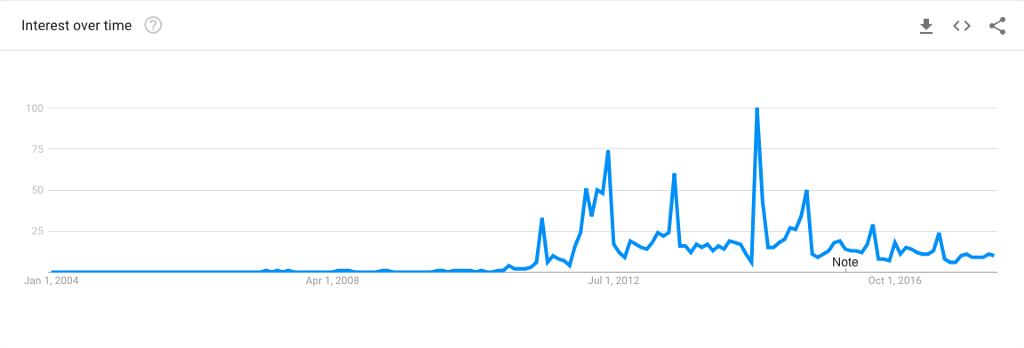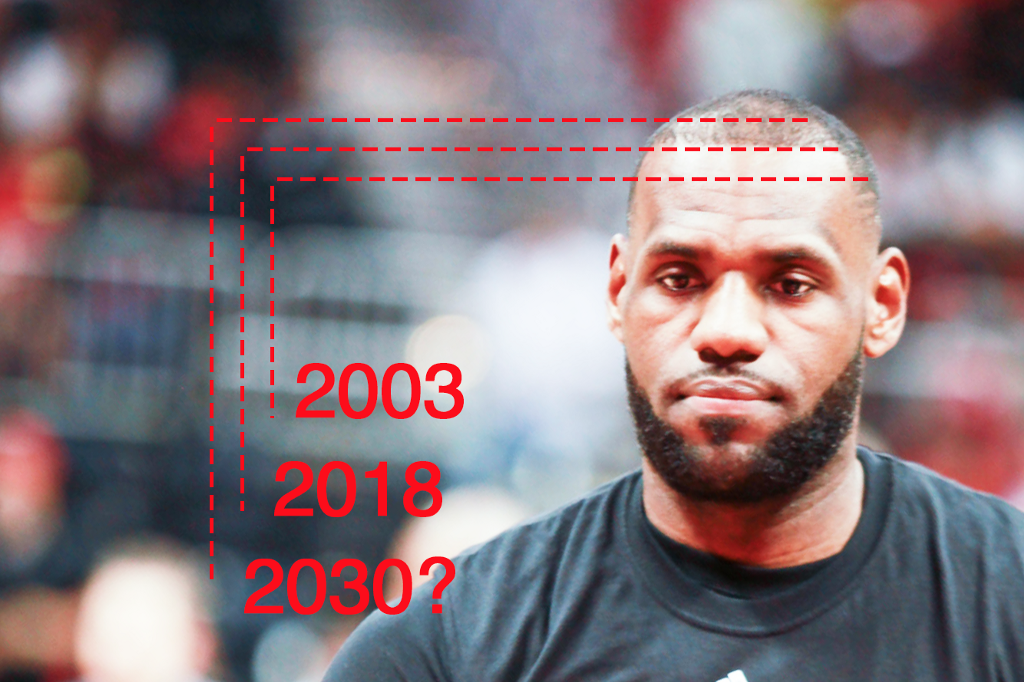I’m of the extremely unpopular opinion LeBron James is a more likable NBA superstar than Michael Jordan, whose spectre has loomed over LeBron’s career since Lebron was in high school.
But there’s one particular arena in which Jordan is indisputably better: hair.
It’s always fun to catch footage of a young, very thin, necklace- and short-shorts-wearing Jordan dunking on fools in a retro Bulls jersey and sporting a thin layer of patchy hair, because you never think of Jordan having a coif.
Jordan eventually came to his senses, realized the six head isn’t a good look, shaved it all off and went on to have the most iconic bald head in recorded human history. He is, as far as I know, the only person on Earth who can sell bottles of cologne using nothing more than a silhouette of his bald head.
LeBron, however, refuses to embrace life as a bald man. Instead, he stubbornly clings to the small, dwindling shock of hair on his increasingly exposed dome. And his ever-receding hairline has become the subject of endless fascination (and ridicule) among NBA fans. One of the best LeBald-related burns was when LeBron went as Pennywise for Halloween…
… and everyone on Twitter made the same lame joke about LeBron and Pennywise having the same hairline.
Whose hairline is worse, Pennywise LeBron or real LeBron? https://t.co/7cimw38Ln2
— Ultra-Fiend (@BigWeiss) November 1, 2017
The obvious joke is that pennywise and Lebron have the same hairline
BAM. Nailed that one.
— KC Fresh Inc (@KCFreshInc) October 31, 2017
But as LeBron’s hair has disappeared, his public perception has soared. Which raises the inevitable question: How related are the two?
That is, has Lebron’s going bald helped him shed his image as an out-of-touch, ultra-rich mega-celebrity, and in turn, made him more relatable to the common man? Or is it all just a big coincidence, more a symbol of the amount of time LeBron has been in our lives than anything else?
Let’s start at the beginning — with the first missing follicle atop King James’ figurative crown. Going by Google Trends search data, interest in LeBron’s hairline began in July 2010. Not coincidentally, that’s the same month as “The Decision,” the ill-fated ESPN special where Lebron announced he was leaving his hometown Cleveland Cavaliers to sign with the Miami Heat and form a super team with Dwyane Wade and Chris Bosh. “The Decision” was almost universally hated by NBA fans. Cleveland fans burned their LeBron jerseys, and even the most steadfast of Lebron apologists admitted that it was a little tone deaf. Given how reviled Lebron was at the moment, it’s only natural fans would roast on his diminishing hairline, too.

Searches about Lebron’s hairline spiked when he and the Heat won the NBA Finals in June 2012. Meanwhile, his Q Score, a measure of a person’s or brand’s recognizability and appeal among the general public, was at a measly 19 out of 100 possible points in 2012. His score rose slightly to 25 in both 2013 and 2014, years in which the Heat either won the NBA championship or appeared in the NBA Finals. While Q Scores can theoretically go up to 100, a score in the 40–50 range is considered exceptional for a public figure. And at a 25, Lebron could have been accurately classified as a polarizing figure. (Admittedly, LeBron was never more unlikable than he was during this stretch; he had fully embraced his role as NBA heel, and him gloating with the NBA championship trophy only further stoked people’s ire.)
LeBron’s image, however, started to rebound in 2014. This was largely due to LeBron returning to the Cavs and his stated goal of improving the city socially and economically. But it also might have had something to do with his suspiciously reappearing hairline. For instance, LeBron showed up to a September 2014 Nike event sporting an uncharacteristically full head of hair, leading some to speculate he’d gotten hair plugs.
Theory: LeBron's new hairline is the result of very well-done plugs. The procedure was done when he went to "Brazil"
— ☕netw3rk (@netw3rk) September 18, 2014
Interest in LeBron’s follicle challenges hit a fever pitch that month, according to Google Trends. And ever since, LeBron’s Q Scores inched closer to the “exceptional level” at 29, 28, 33 and 32 respectively from 2015 to 2018.
I must note that correlation doesn’t imply causation. (Oh, and also: This is far from a scientific inquiry.) LeBron’s improved public image can be due to any number of things, namely his outspokenness on social issues, his return to Cleveland (he brought the city its first championship since 1964) or his generous charitable efforts. But I’d like to think watching LeBron fight a losing battle against baldness has played a factor, too.
Because there’s nothing more relatable than a man desperately clinging to what little hair he has left, and engaging in whatever aesthetic trickery he can afford to beat back the sands of time.
That’s not a matter of being likable or unlikable, it’s just a matter of being human.
